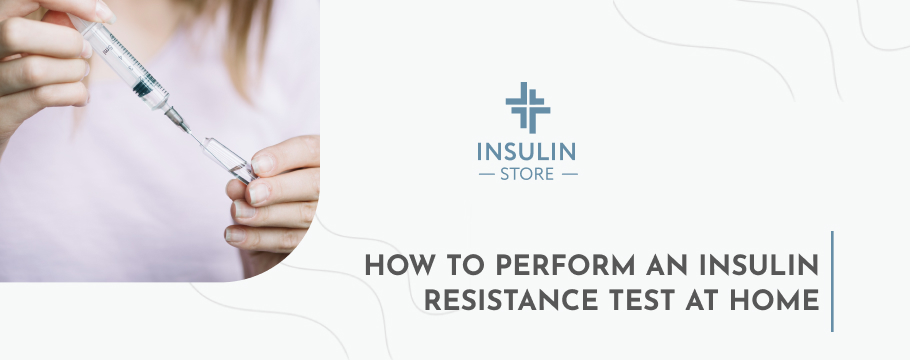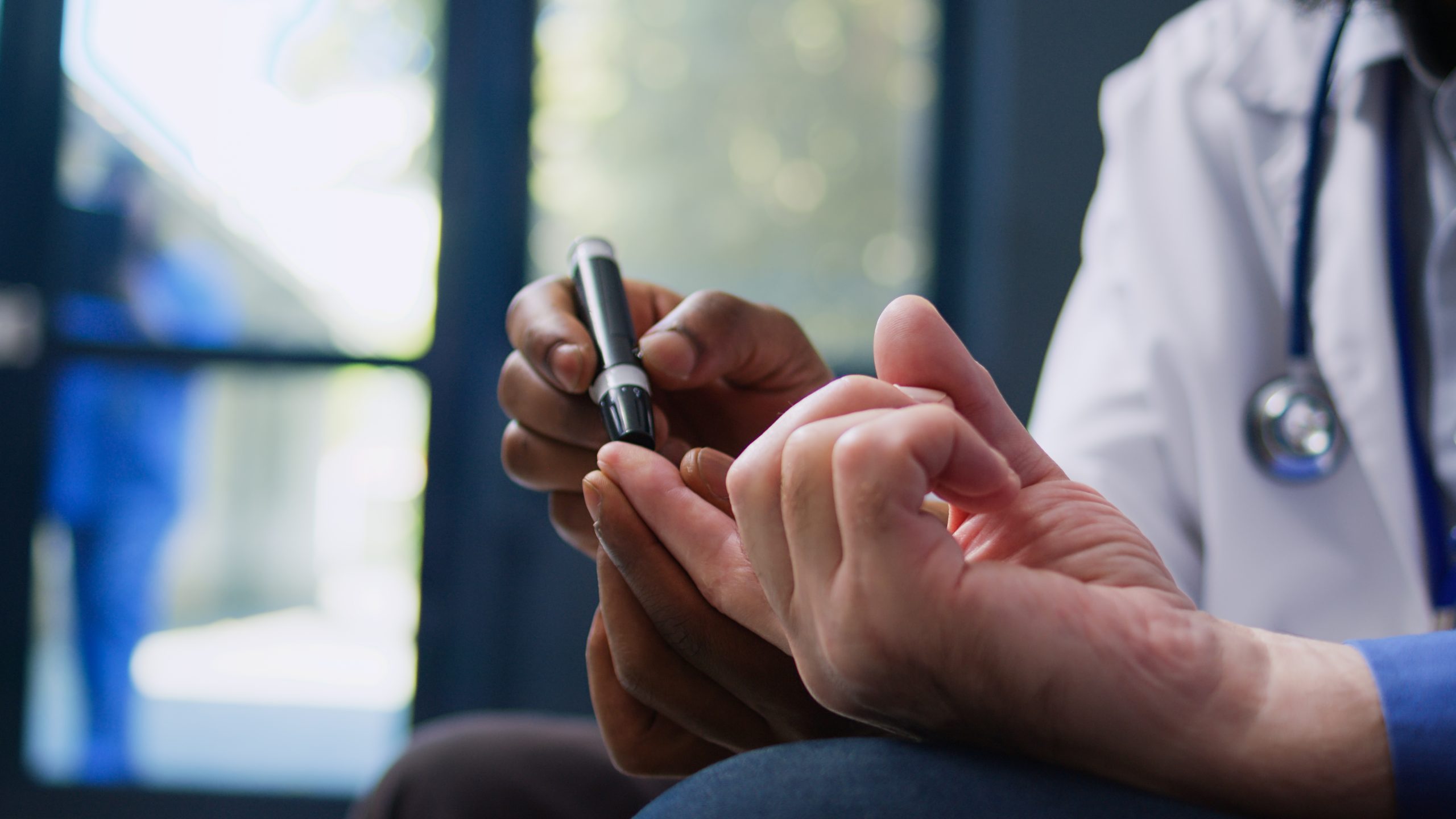
How to Perform an Insulin Resistance Test at Home
Insulin resistance – an unfortunate condition that is characterized by the body’s reduced ability to utilize insulin. It develops gradually and can become quite a serious issue if not diagnosed and treated on time. Not only does it worsen one’s general health situation, but it also negatively impacts certain health conditions, such as elevated lipid levels, diabetes, and various heart problems. There are a few ways to measure your insulin resistance, and there are some that don’t require visiting a doctor’s office every time and going to the clinic for a blood test. We will discuss these in more detail to ensure you understand all the options offered for your safety and comfort.
In case you are looking for a place to buy your medications for blood sugar control, Insulin.Store offers a wide selection of products at beneficial prices. Effective insulin at Canadian prices can be delivered to your address in the shortest terms, so ensure to check out everything we offer and place the order today. Here, we do everything we can to provide you with the best customer experience!
The Definition of Insulin Resistance
Insulin is an important hormone produced by the pancreas, which is secreted during certain points of the day, as well as immediately after eating. The main task of this hormone is to deliver glucose from the blood to the cells to maintain blood sugar at acceptable levels. However, certain people suffer from conditions where blood glucose isn’t recognized by the cells, which makes blood sugar levels rise and causes the cells to not receive all the nutrients they need to function properly.
Basically, insulin resistance means that the body isn’t able to respond to insulin the way it should, which means blood glucose levels are not regulated properly. Cells become less sensitive to the natural insulin, thus a person experiences blood sugar spikes. This condition may develop due to various factors, starting with genetic predisposition and ending with an unhealthy lifestyle.
Increased blood glucose levels can also be a symptom of insulin resistance, which can develop into pancreas fatigue and, as follows, one’s inability to produce enough insulin. To diagnose the issue on time and follow its development, knowing the ways to measure it regularly is vital, and thankfully, you can even do it at home, so let’s look closely at some of the available options.
Blood Test and Other Ways to Measure Insulin Resistance at Home
Fortunately, for those who don’t want to run from clinic to clinic to understand their current situation with blood sugar levels, there are some ways to monitor insulin resistance calculations at home. Fasting blood glucose in a healthy person equals approximately the range of 70-100 mg/dL (1). Here are a few variants of how to measure these numbers at home:
- Insulin and blood glucose monitoring. Certain devices can be used at home to see the real numbers of your insulin levels. The glucose meter and finger stick, CGM (continuous glucose meter), and test strips are perfect for safe check-ups to understand the real situation with your insulin resistance. Talk with your doctor to pick the best option for your case;
- Waist circumference monitoring. This one will help to regulate one’s eating habits and lifestyle, which are helpful for managing insulin resistance. Waist circumference in women should be 88 cm and 102 cm or less in men. As for the risk factors, 80 cm in women and 94 in men is considered to be a risk factor, so going through regular checkups is vital here;
- HOMA-IR value calculation. If you know your fasting glucose level and insulin level, you can find out whether you are insulin resistant with the help of a few formulas. Multiply the fasting blood glucose(mg/dL) and fasting insulin value (microU/ml) you’ve got in the blood test, and divide what you’ve got by 405.
Of course, insulin resistance can be measured at the hospital for more precise results that are followed by the doctor’s comments and recommendations, but still there is an option to check everything on your own once in a while to not miss the moment of when to discuss your conditions with a specialist.
How to Measure Insulin Resistance in the Clinic?
To get an official insulin resistance diagnosis in the hospital, you may go through a few tests to keep everything in check. Here are some of the most helpful options that show precise results:
- Fasting plasma glucose test. This test measures one’s blood sugar after a patient doesn’t eat for at least 8 hours before the test;
- Oral glucose tolerance test. This one should be performed after the fasting blood glucose test. After it’s done, you drink a sugary solution and go through another blood test after 2 hours;
- Hemoglobin A1c test. With the help of this test, you may see average blood sugar levels for the past 2-3 months. It’s one of the best ways to diagnose diabetes or prediabetes. To confirm the results, this test may be taken more than once;
- Lipid panel. Lipids are fatty compounds in the blood, and there are several types of those, which can be characterized as good and bad. You can check those with the blood test. High levels of cholesterol and triglycerides mean you may develop insulin resistance and type 2 diabetes;
- Physical exam. A doctor always checks your weight and whether you have high blood pressure to understand whether you are affected by the condition.
After going through all the blood tests and required checkups, your healthcare provider can provide you with an official diagnosis, as well as start creating the treatment plan according to your personal needs. The medications for diabetes, insulin resistance, and all the following problems must also be picked after the checkups in the clinic, so we highly recommend not to skip your planned doctor appointments.
Symptoms of Insulin Resistance You Should Pay Attention to
Insulin resistance also means an increased risk of type 2 diabetes development, which is why it’s so important to pay attention to the symptoms to be diagnosed on time. Besides, after you get your diagnosis, you can improve your insulin sensitivity, which is vital for the positive outcome of the treatment and optimal metabolic health.
So, what are the main symptoms of insulin resistance?
- Increased appetite. If you experience constant hunger and sudden unusual food cravings, it may be a sign of insulin resistance;
- Hypoglucemia or low blood sugar levels. Typically, blood sugar drops if you skip the meal, which leads to dizziness, sweating, and weakness;
- Apple-type obesity. If the fat is concentrated mostly on your abdomen, it may be a sign of insulin resistance;
- Frequent urination. If people suffer from insulin resistance, their kidneys produce more urine, thus they feel a constant urge to urinate;
- Unusual fatigue. If you feel exhausted even after a good night’s sleep, the reason for it may be developing insulin resistance;
- High blood pressure. People with IR are at a higher risk of experiencing cardiovascular disease and high blood pressure.
If you notice any of these, we highly recommend not to ignore the signs and go through a standard medical checkup to ensure you’re safe.
Ways to Reduce Insulin Resistance
So, what if you have a problem and need to improve insulin sensitivity to keep yourself safe and healthy? Here are a few recommendations known and approved by numerous specialists that can help you control and prevent the condition:
- Add exercise to your routine. Being active improves the way your body reacts to insulin. 30 minutes of any activity per day may improve the condition significantly: walk, run, workout – just pick the activity that brings you joy;
- Work on your weight. If your doctor confirms that you have to lose weight for your own health, don’t try to starve yourself to death or exercise like crazy. Work on your weight loss gradually for the most beneficial results;
- Exclude processed food from your diet. We recommend eliminating refined carbohydrates, as these have a negative impact on the body’s ability to react to insulin properly;
- Manage your stress. Blood sugar levels tend to rise when we are stressed, so keeping a cold head and shielding yourself from stress is a good idea to prevent insulin resistance.
To Sum Up the Discussion
Insulin resistance is an unfortunate condition that can eventually develop into type 2 diabetes, which is incurable and can potentially cause plenty of health problems. In order to diagnose it on time, it’s highly recommended to follow certain types of home testing to know when it’s time to visit a doctor’s office. Stay safe out there and keep a close eye on your health; your well-being must be your main priority!
